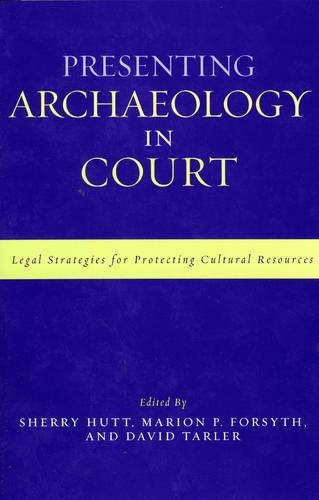
Presenting Archaeology in Court: Legal Strategies For Protecting Cultural Resources
Series: Heritage Resource Management
The passage of the Archaeological Resources Protection Act (ARPA) in 1979 was a watershed moment in the movement to protect cultural objects against looting. This brief volume provides practical help to those who wish to use the provisions of ARPA_archaeologists, government land managers, preservation groups, and attorneys_to maximize its protective net. The distinguished group of authors, all vet
NaN
VOLUME
English
Paperback

The passage of the Archaeological Resources Protection Act (ARPA) in 1979 was a watershed moment in the movement to protect cultural objects against looting. This brief volume provides practical help to those who wish to use the provisions of ARPA_archaeologists, government land managers, preservation groups, and attorneys_to maximize its protective net. The distinguished group of authors, all veterans of ARPA enforcement efforts, first provides a comprehensive history of passage of the law and highlights some key cases that shaped its impact. Other chapters offer concrete instructions on establishing archaeological valuation and assessing damage to cultural sites. A final section provides a menu of legal strategies now available for use to strengthen and extend the provisions of the law. For cultural resource professionals working under ARPA's provisions, this book will be an invaluable, guide for daily practice.About the Author: Sherry Hutt is the Program Manager, National NAGPRA Program, a retired Superior Court judge and a former Assistant US Attorney assigned to prosecute ARPA cases. Marion Forsyth is an attorney in private practice, specializing in cultural resources matters. David Tarler is an attorney and archaeologist working as a contractor to the National Park Service Archeology Program.
Price Comparison [India]
In This Series
Bestseller Manga
Trending NEWS




















